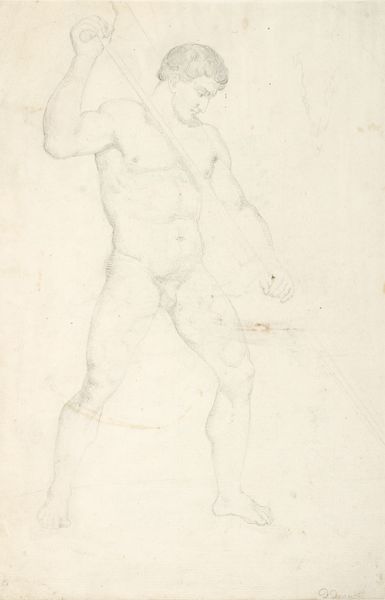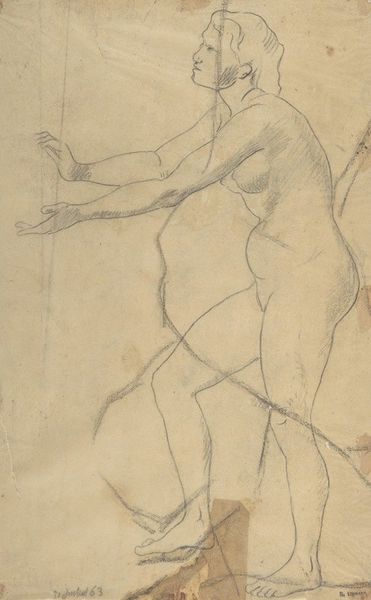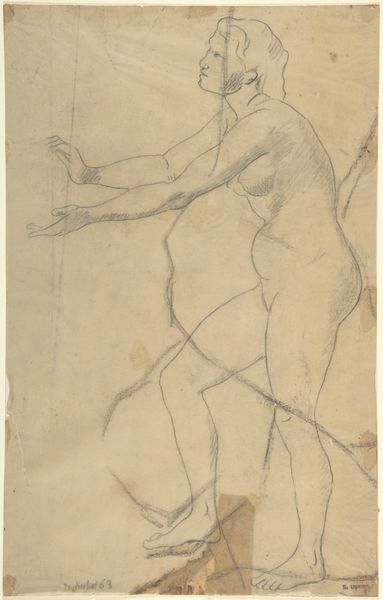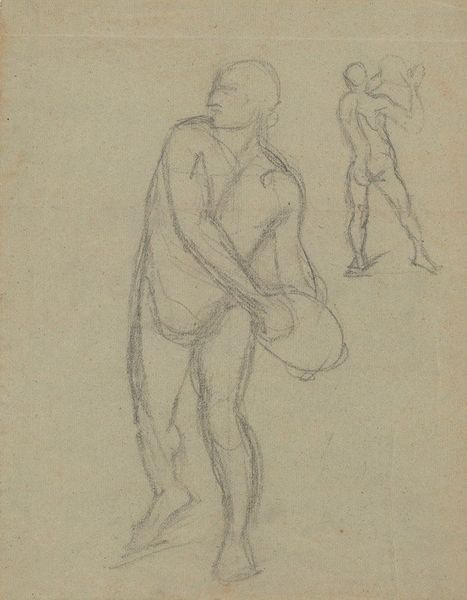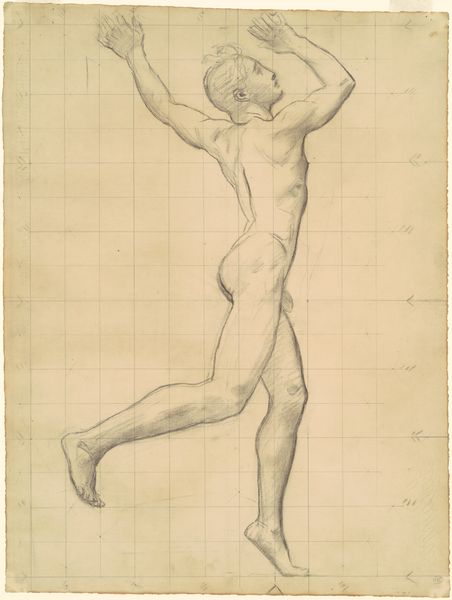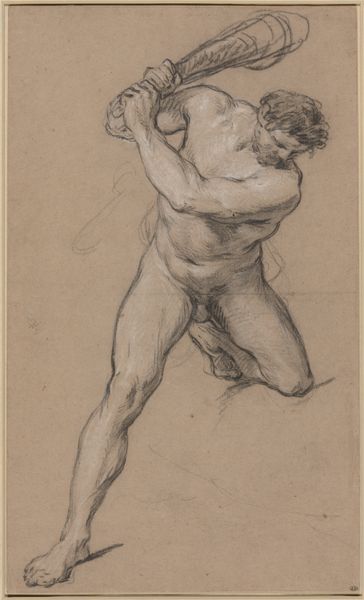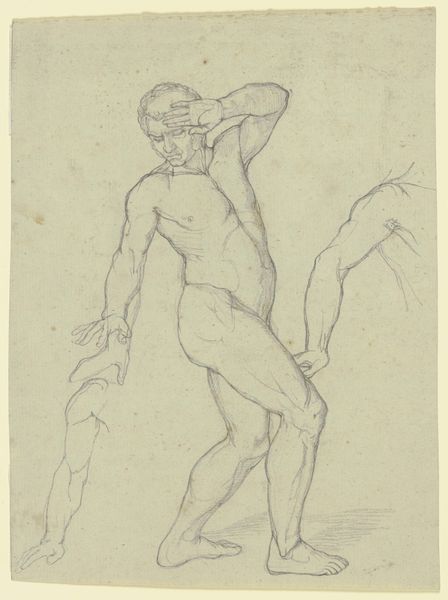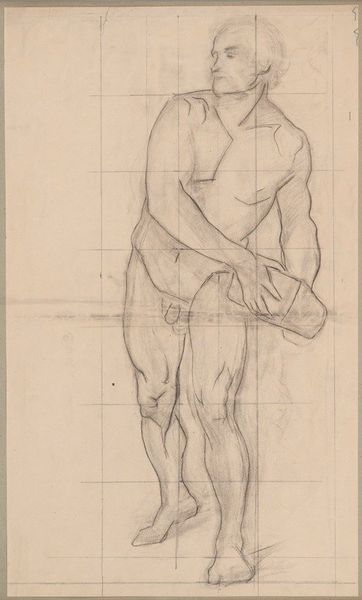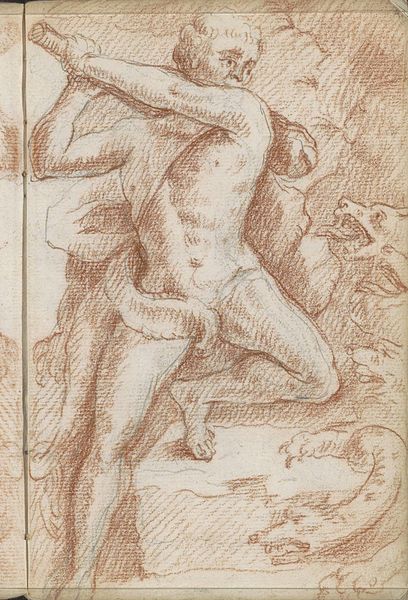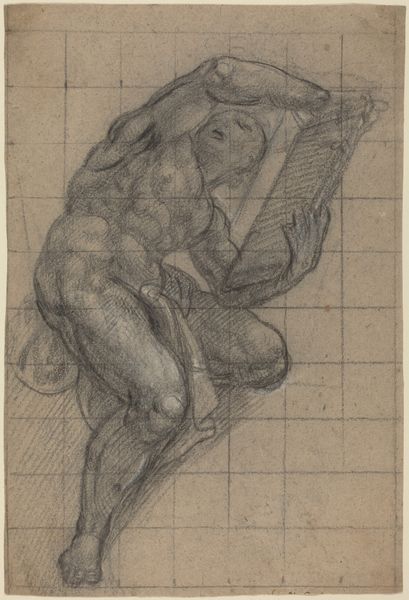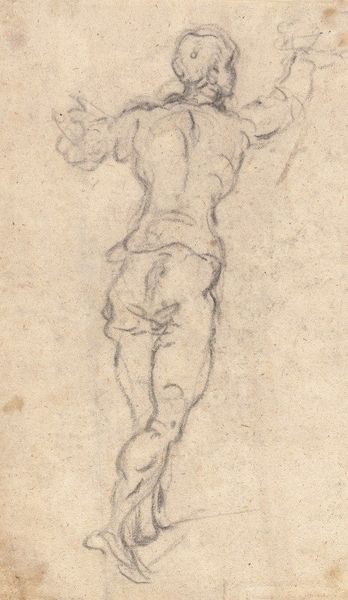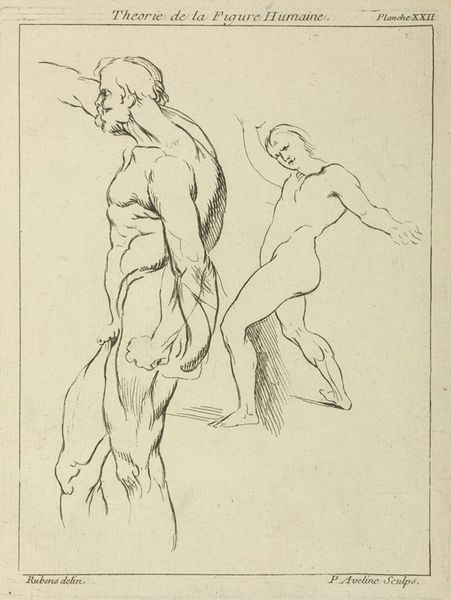
drawing, pencil
#
drawing
#
amateur sketch
#
toned paper
#
light pencil work
#
pencil sketch
#
incomplete sketchy
#
figuration
#
personal sketchbook
#
detailed observational sketch
#
pencil
#
sketchbook drawing
#
academic-art
#
nude
#
sketchbook art
#
realism
#
initial sketch
Dimensions: height 187 mm, width 116 mm
Copyright: Rijks Museum: Open Domain
Curator: Immediately, I see tension—a figure struggling, reaching. There’s an incompleteness, a sketch-like quality. It feels raw, honest. Editor: Indeed. What we have here is a drawing by Fernand Cormon, a study titled "Studie naar mannelijk naakt, knielend, de armen omhoog"– roughly translated, “Study of a male nude, kneeling, arms raised.” It was created sometime between 1855 and 1924, and now resides here at the Rijksmuseum. A quick sketch in pencil, seemingly, on toned paper. Curator: That grid underneath...it imposes order, yet the figure strains against it. What does this enforced structure say about how we view the body? Or even the human spirit? It makes me think about the constraints placed upon us by society or by our own physical limitations. Editor: Well, this approach—academic study—was a convention for artists like Cormon. The grid likely aided him in achieving accurate proportions. These sketches were crucial to developing skill. It’s worth remembering the artistic institutions that demanded this fidelity to form in the 19th century. This was a standard process, to go through careful training. Curator: Yes, but the finished artwork is so different than such initial work, right? Editor: True! But that is, also, another purpose to note... I think that even the bareness of the form makes visible not simply the musculature of the body, but the skeletal foundation as well. An underlayer often unacknowledged, even though necessary for all activity... The act of drawing is, in effect, an unveiling. Curator: Absolutely, a sort of visual archaeology. Peeling back layers. It shows us a specific kind of art education and art production of the time. To me, the raised arms could evoke prayer, surrender, or perhaps resistance. It's multifaceted. And these additional studies of the hands emphasize them, singling them out for focused rendering, perhaps, or a detail intended for another larger image. Editor: I agree. A confluence of intent and influence, the way artists trained, and this all coalesced on a single page, a record in pencil on paper. I like pondering how an artwork comes into being by degrees like this. Curator: Cormon gives us insight into what constitutes not only a human figure, but the components and process by which to picture a body that means. Thank you.
Comments
No comments
Be the first to comment and join the conversation on the ultimate creative platform.
